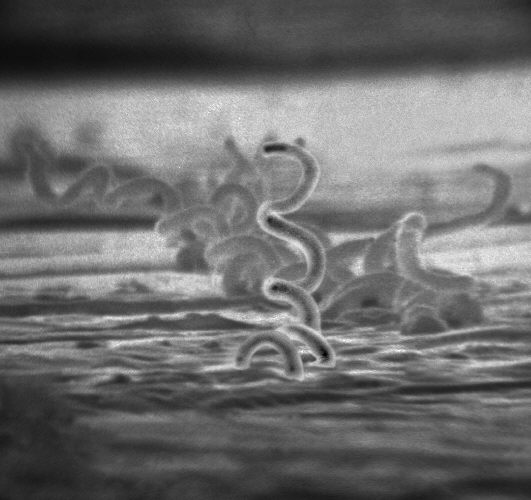The Many Forms of Symbiosis Inside Termite Guts
Termites are close relatives of cockroaches, and they are a crucial part of the ecosystem they live in - they decompose and recycle waste material. Also, they are a source of atmospheric methane, which is one of the main greenhouse gasses. Not cool, termites, not cool.
A typical termite feeds on plant material, mostly wood. You may or may not know that cellulose, the key ingredient of plant material, is really hard to break down. That's why our plant-eating friends, just like many other herbibores, rely on symbionts inside their gut to do the job for them, using digestive enzymes to make the nutritious sub-ingredients inside wood available for digestion.
Termites are usually divided into two groups based on their associations with gut bacteria: "higher" and "lower" termites:
"Higher" termites need symbiotic prokaryotes (bacteria and/or archaea) to produce the needed enzymes. Their menu is rich and comprises of a wide variety of materials, such as feces, grasses, roots and humus (not to be confused with hummus, though maybe they'd have some of that, too, if your recipe's good).
"Lower" termites like to eat wood. Different populations or species prefer to eat the wood of different trees - mostly when it's already been attacked by some fungus. Besides prokaryotes, these termites also rely on the help of eukaryotes to help them break down cellulose. Those are protists, mainly parabasalid flagellates, but not even these guys can succeed without help and need symbionts of their own.
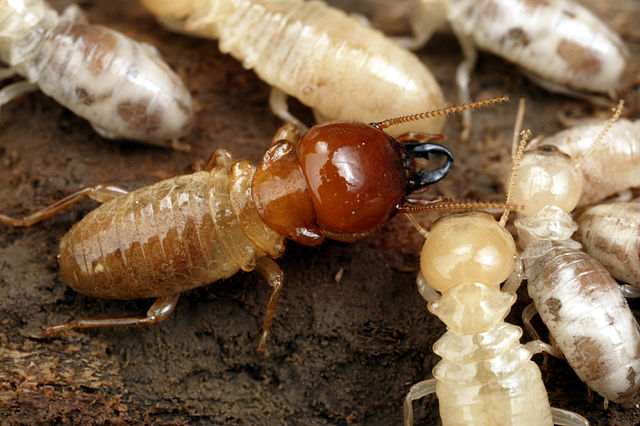
Credit: CSIRO
Symbio-ception?
Protists of the genus Trichonympha (seen in the embedded video as long slug-like creatures) live in most "lower" termite species and rely on symbiotic bacteria on their surface - epibionts - to produce the necessary digestive enzyme, cellulase, to break down cellulose. Termites need the end product of cellulose digestion.
Another protist, Staurojoenina mulleri, a hypermastigont parabasalian, is found in the hindgut of North American termites, Neotermes jouteli. Other Staurojoenina symbionts have been found in termites worldwide. Just like Trichonympha, Staurojoenina relies on epibiont bacteria to produce cellulase, so that it can break down cellulose. The rod-like structures seen on its surface when photographed by an electon microscope are the bacteria.
Thought I'd share a video of the termite gut as well. Termites, along with their amazing symbiotic communities of protists, bacteria, and archaea, were collected during a lab hike in the hills near UC Berkeley. pic.twitter.com/5jmuC8LERg
— Ben Larson (@BEuplotes) February 16, 2019
When One Is Five
The last fascinating symbiont we'll discuss here is Mixotricha paradoxa, which lives solely in the gut of the Darwin termite (Mastotermes darwiniensis). Apart from endosymbiotic bacteria that also produce cellulase, M. paradoxa has thousands of Treponema spirochete and rod bacteria on its surface (some sources state 0.25 other 0.5 million). The protist is basically five different organisms - two spirochete and one rod bacterium species on the surface, at least one endosymbiotic bacterium to digest cellulose inse the host and, of course, the host.
What do so many bacteria do on its surface, you ask? The protozoan doesn't use the four flagellae it has for locomotion, and, instead, it uses the bacteria to move around. The four flagellae are only used for steering. Yes, they can move around thanks to symbiotic bacteria which are, actually, close relatives of the bacteria that cause syphilis in humans, Treponema pallidum.
The Beast with 5 Genomes! https://t.co/grPeWXCbzb
— IAmSciArt (@IAmSciArt) December 28, 2017
An old article from Lynn Margulis and Dorion Sagan (who present their subject with artistic flair) about Mixotricha paradoxa https://t.co/RDtlNP5M60 pic.twitter.com/nv6zOlY0GJ
To get some hard work done, you sometimes need to employ the bad guys.
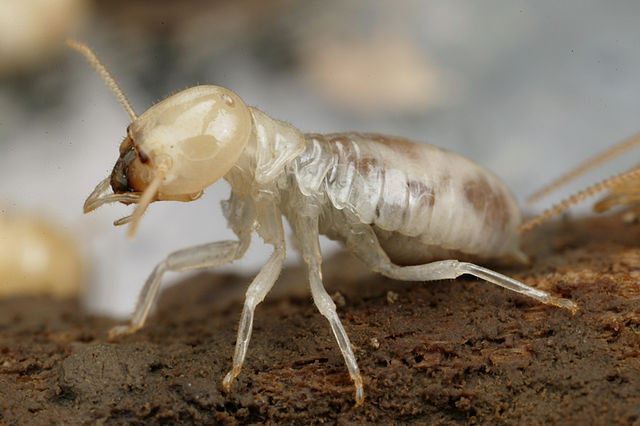
Photo credit: CSIRO
| Common name: | Darwin termite |
| Scientific name: | Mastotermes darwiniensis |
| Phylum: | Arthropoda |
| Class: | Insecta |
| Order: | Blattodea |
| Family: | Mastotermitidae |
| Scientific reading: |
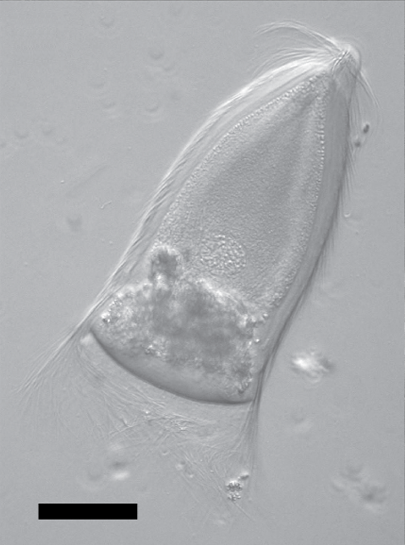
Photo credit: Tai V, James ER, Perlman SJ, Keeling PJ
| Scientific name: | Trichonympha |
| Phylum: | Metamonada |
| Class: | Parabasalia |
| Order: | Hypermastigida |
| Family: | Trichonymphidae |
| Scientific reading: |
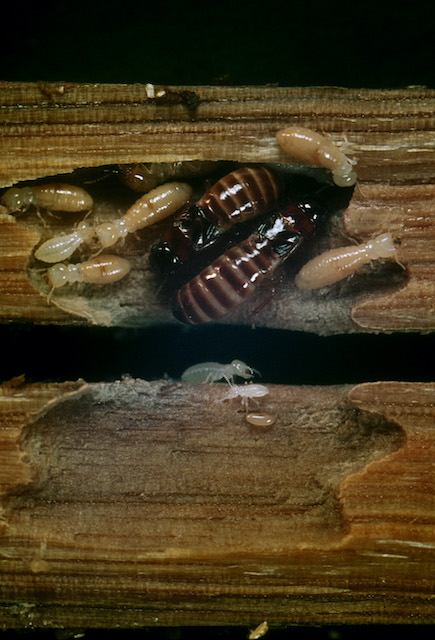
Photo credit: N. insularis
by CSIRO/Forestry and Forest Products
| Scientific name: | Neotermes |
| Phylum: | Arthropoda |
| Class: | Insecta |
| Order: | Blattodea |
| Family: | Kalotermitidae |
| Scientific reading: |
